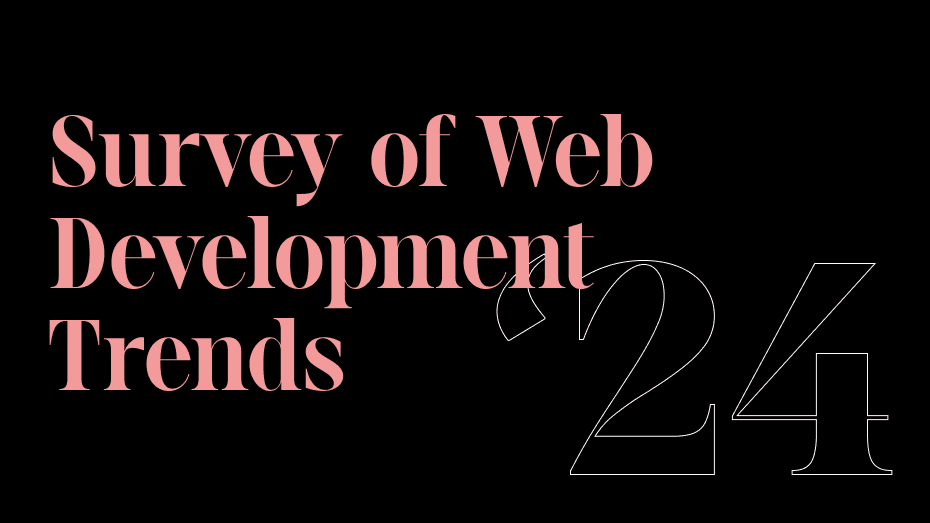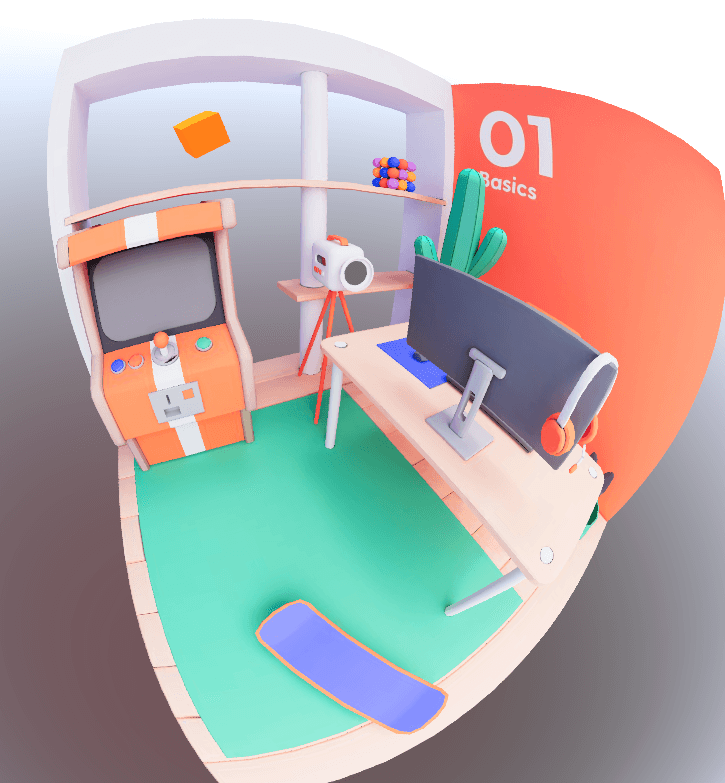Survey of Web Development Trends 2024
Written by: Anthony Das

Web development is one of the fastest evolving disciplines in the world. It feels like every year there are new trends and technologies being released. With so many promising trends, it is an exciting time to be in web development. We’ll try to tackle a few of them in this article.
The Compostable Web
There is a growing trend where websites are built with modular components that can be easily combined and customized to create complex and dynamic web experiences. Embracing principles of a compostable web fosters a more efficient development process, encourages code reusability, and enhances collaboration among developers by breaking down large and monolithic codebases into smaller, more manageable pieces. Additionally, it enables rapid prototyping, easier maintenance, and scalability as applications evolve over time.
Modern web development approaches offer a powerful toolkit for building sustainable, adaptable, and efficient web applications. You can leverage micro-services to break down applications into smaller, independent services promoting modularity and scalability. Meta-Frameworks and the many other Static-Site Generators (SSG) or component driven development frameworks are leveraged to create websites using reusable components.
Jamstack
Jamstack is a movement that embraces composability and reusability principles. It promotes the separation of concerns by decoupling the frontend presentation layer from the backend logic and data. This separation allows developers to compose their web applications using reusable components, which can be easily combined and customized to create dynamic and interactive user experiences.
The Headless CMS
An age old problem, how to store and organize your content on the web? The headless CMS (Content Management System) provides content editing and storage capabilities without dictating how content is presented. Developers can create the frontend however they like and leverage omni-channel capabilities through an exposed API. These systems power many of the content driven websites today and are a main component of the Jamstack approach.
Some CMS’ we’ve tried out and ones to consider include:
- Sanity
- our CMS of choice, extremely developer friendly, full featured and customizable
- Contentful
- a great CMS that is easy to get going out of the box
- can easily setup content types without writing any code
- Strapi
- one of the leading open-source headless CMS'
Meta-Frameworks & Serverless Architecture
Meta-Frameworks
It feels like new meta-frameworks appear daily built on projects, like React and Svelte, that have changed the way we create user interfaces. Frameworks that generate static sites are combined with a CMS to complete the Jamstack approach. Some notable new meta-frameworks to keep an eye on are:
Remix
Built on react, a worthy competitor to Next.js, remix is a full-stack web framework. It is a server and browser runtime built with new takes on web development methodologies.
Astro
Astro is a modern front-end framework that aims to streamline web development by enabling developers to build websites using a component-driven approach. It allows developers to use familiar tools like React, Vue.js, or Svelte.
Serverless
Frameworks like those mentioned above, allow for the use of serverless technologies where the server management is abstracted away. Instead of provisioning and managing servers, developers focus on writing code for specific functions or services, which are executed in response to events triggered by user actions or predefined triggers.
One of the key advantages of serverless architecture is its scalability and cost-effectiveness. Additionally, serverless architectures promote rapid development. For example, we’ve been able to quickly present prototype software and ideas allowing for more practical early-stage research and development.
UI Libraries, Animations & 3D Elements
We are now able to run 3D elements and many animations without impeding performance or loading times and UI libraries are packing them into ready to use components. This has transformed the web experience, captivating users with interactive and immersive content. While these technologies have been around for awhile the skills are becoming almost essential for any web developer.
UI Libraries
There is a never ending supply of UI Libraries being published these days. New libraries have taken novel approaches from copying and pasting components to ready made animations. We could go on forever but here are some we are keeping an eye on in 2024:
Animations
Animations on the web enhance user engagement and interaction by adding dynamic visual elements that capture attention and convey information in an exciting manner.

taken from framer motion documentation
Some projects that’ll make life a little easier include:
3D Elements
Similar to animations, 3D elements enhance user engagement and increase the possibilities for story telling; now entire worlds or objects can be represented on a website in a three dimensional space. We are seeing a growing number of websites using these elements in their designs. 3D elements bring a new dimension to user experiences, offering immersive environments and interactive content that blur the lines between the digital and physical worlds, elevating engagement and creativity in web design.

taken from react-three-fiber documentation: sandbox
Some libraries to get up and running include:
These projects embed animations and 3D elements into web design adding depth, interactivity, and engagement to online experiences. They power some of our favorite web design trends, which we’ll cover in the future.
AI
We can’t write an article about 2024 trends without the mention of AI at some point. A buzzword being constantly thrown around has it applications in web development of course. We believe we are just getting started in integrating AI into our world and have a long way to go.
Image Generation
Image generation is a very interesting and highly impactful form of AI. The maturing landscape of image generation and even video generation can completely change the world of web content.
Integrating tools for content marketers to generate images on the fly can greatly speed up the creation process and uniqueness of your content.
Image generation can also be leveraged in web designs to provide fresh personalized experiences for users every time they visit. Or it can be used by developers and designers to create new elements or entire web designs, like with v0 by Vercel or Framer.
There are countless other use cases for image generation, I think we’re just scratching the surface.
Code Assistance
Code assistance has been around for a while now; with the advances in LLM (Large Language Models), we can more organically use these tools. The code assistants can also take on more complex tasks like creating tests or explaining issues in your code.
Using AI assistance to develop is becoming an essential skill that will only speed up your productivity and knowledge as a developer. I’ve used it to learn new frameworks, generate boilerplate code, and carry-out tedious updates, saving me countless hours.
Chatbots
Providing personalized support to users of your site, similar to the coding assistants, can be a helpful tool in improving your users experience and brand reputation. We are able to now more easily train chatbots on a defined knowledge base creating personalized support.
believe that chat bots can even be used more creatively in storytelling sites or even with generating dynamic brand specific copy or ideas more easily.
Conclusion
We believe that we are reaching a pivotal moment in the fast changing landscape of web development. New technologies and methodologies are keeping web developers constantly busy. Before we go a notable mention is bun, a new javascript runtime to keep an eye on, and whatever the Web3 world might become.